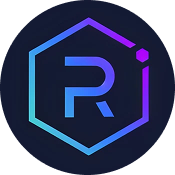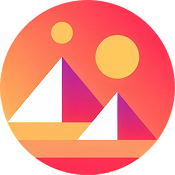When exploring the vast landscape of blockchain technology, some projects focus on redefining supply chain integrity while others revolutionize gaming and digital ownership. VeChain and Axie Infinity exemplify these divergent paths—VeChain streamlines enterprise solutions with a robust, scalable blockchain, whereas Axie Infinity pushes the boundaries of play-to-earn gaming on a blockchain-compatible platform. This comparison sheds light on their technical foundations, use cases, and the audiences they serve, helping investors and enthusiasts understand which aligns best with their goals.
Short on time? Jump to VeChain vs Axie Infinity Comparison
Understanding VeChain and Axie Infinity ?
VeChainThor is a layer 1 public blockchain built to serve enterprise needs, emphasizing efficiency, sustainability, and high transaction throughput. Since its inception in June 2018, VeChain has maintained 100% uptime, producing blocks every 10 seconds with minimal energy consumption—just 0.04% of what other blockchains typically use. Its Proof of Authority (PoA) consensus, driven by 101 trusted authority masternodes, ensures security and speed while fostering accountability through strict KYC procedures. VeChain’s technical architecture supports diverse applications from supply chain management to product authenticity verification, making it a cornerstone for enterprise adoption.
Axie Infinity, on the other hand, is a pioneering blockchain-based game built on the Ronin sidechain, an Ethereum-linked network designed explicitly for scalability and gaming. It allows players to breed, trade, and battle cute, collectible creatures called Axies, which are represented as NFTs with unique attributes. The game’s economy is driven by its native tokens, AXS and SLP, enabling a play-to-earn model that rewards players with real-world value. Despite its success, Axie has faced challenges such as the 620 million dollar Ronin hack, prompting a reassessment of security measures. Its focus on entertainment and digital ownership makes it a leader in blockchain gaming.
VeChain has garnered attention through real-world use cases like supply chain tracking for Walmart China, where millions of transactions are processed daily, demonstrating its enterprise readiness. Its solutions extend to food safety, luxury goods verification, and logistics, emphasizing transparency and trust. Conversely, Axie Infinity has created a thriving virtual economy with millions of active users, pioneering a new genre of blockchain gaming that blends entertainment with financial opportunity. Both projects showcase the versatility of blockchain technology but target distinctly different markets—business infrastructure versus interactive entertainment.
Understanding their core architecture and operational focus provides a foundation for comparing their technological strengths, use cases, and community engagement. While VeChain emphasizes enterprise scalability and sustainability, Axie Infinity prioritizes user engagement and digital asset ownership in a gaming context. Both leverage blockchain’s transparency and security, but their implementations reflect their unique objectives—VeChain with a permissioned, enterprise-grade model, and Axie with a decentralized, gaming-oriented ecosystem.
Key Differences Between VeChain and Axie Infinity
Purpose and Use Case
- VeChain: VeChain is designed primarily for supply chain management, product authenticity, and enterprise solutions. Its infrastructure supports real-world business applications, improving transparency, efficiency, and traceability across industries. VeChain’s technology aims to replace traditional methods of verification and tracking, making supply chains more reliable and less prone to fraud.
- Axie Infinity: Axie Infinity is centered around blockchain gaming and digital ownership. Its purpose is to provide an engaging, play-to-earn environment where players breed, trade, and battle Axies. The platform leverages NFTs to create scarcity and value for digital assets, fostering an economy driven by user participation and entertainment.
Consensus Mechanism
- VeChain: VeChain employs Proof of Authority (PoA), a permissioned consensus that involves 101 vetted Authority Masternodes. This model offers high throughput, low energy consumption, and accountability, making it ideal for enterprise applications requiring speed and security without decentralization at the same level as public blockchains.
- Axie Infinity: Axie Infinity uses a hybrid approach on the Ronin sidechain, which employs Byzantine Fault Tolerant (BFT) algorithms with Proof of Authority (PoA). While this setup ensures fast transaction speeds suitable for gaming, it introduces a different security model, relying on a limited number of validator nodes to maintain network integrity.
Energy Efficiency
- VeChain: VeChain is highly energy-efficient, consuming just 0.04% of the energy that traditional blockchains require. Its PoA consensus reduces the computational load, making it sustainable for large-scale enterprise deployment and continuous operation without significant environmental impact.
- Axie Infinity: Axie Infinity’s blockchain operations, via the Ronin sidechain, are optimized for high-speed transactions with low fees. While specific energy consumption metrics are less emphasized, the sidechain’s design aims to balance performance with sustainability, though the security breach highlighted ongoing risks.
Security and Trust Model
- VeChain: VeChain’s security relies on trusted Authority Masternodes that undergo strict KYC procedures, ensuring accountability and reducing malicious activity. The permissioned model fosters a trusted environment suitable for sensitive enterprise data and supply chain applications.
- Axie Infinity: Axie Infinity’s security depends on its validator nodes within the Ronin network, which, prior to the hack, comprised nine nodes with plans to expand to 100. The decentralized game ecosystem emphasizes transparency and user control but has faced security vulnerabilities due to the sidechain’s centralized aspects.
Community and Adoption
- VeChain: VeChain’s community includes enterprise partners like Walmart China, regulators, and supply chain stakeholders committed to transparency and efficiency. Its adoption is driven by real-world use cases, regulatory compliance, and scalable technical infrastructure.
- Axie Infinity: Axie Infinity boasts a vibrant, active gaming community with millions of users engaged in gameplay and economic activities. Its social and economic ecosystem is built around NFTs and tokens, attracting a broad demographic interested in gaming, NFTs, and blockchain-based finance.
VeChain vs Axie Infinity Comparison
| Feature | ✅ VeChain | ✅ Axie Infinity |
|---|---|---|
| Main Purpose | Enterprise solutions for supply chain, product verification, and logistics. | Blockchain gaming with play-to-earn mechanics and NFT assets. |
| Consensus Mechanism | Proof of Authority (PoA) with 101 trusted masternodes. | Hybrid BFT with PoA on the Ronin sidechain. |
| Transaction Speed | Approximately 10 seconds per block. | Fast, optimized for gaming, with low transaction fees. |
| Energy Consumption | Extremely low, 0.04% of traditional blockchains. | Optimized for performance; specific metrics vary but designed for efficiency. |
| Security Model | Accountability via KYC-verified Authority Masternodes. | Validator nodes within Ronin, with plans to expand for better security. |
| Use Cases | Supply chain, product authenticity, food safety, luxury goods. | NFT-based game assets, digital ownership, play-to-earn economies. |
Ideal For
Choose VeChain: Businesses seeking scalable, sustainable blockchain infrastructure for supply chain and enterprise applications.
Choose Axie Infinity: Gamers and digital asset enthusiasts interested in blockchain gaming and NFT ecosystems.
Conclusion: VeChain vs Axie Infinity
VeChain and Axie Infinity demonstrate the expansive versatility of blockchain technology, each excelling in their respective domains. VeChain’s enterprise-grade architecture emphasizes security, scalability, and sustainability, making it a prime choice for supply chain and business solutions. Conversely, Axie Infinity’s innovative use of NFTs and play-to-earn models has revolutionized the gaming industry, creating vibrant economies and communities around digital assets.
Choosing between them depends on your focus—whether it is building a trusted, scalable infrastructure for real-world applications or engaging in a dynamic, entertainment-driven blockchain ecosystem. Both projects highlight blockchain’s potential to transform industries, but their success hinges on aligning their technical capabilities with user needs and market trends. For investors and enthusiasts, understanding these differences provides clarity in navigating the evolving crypto landscape.






